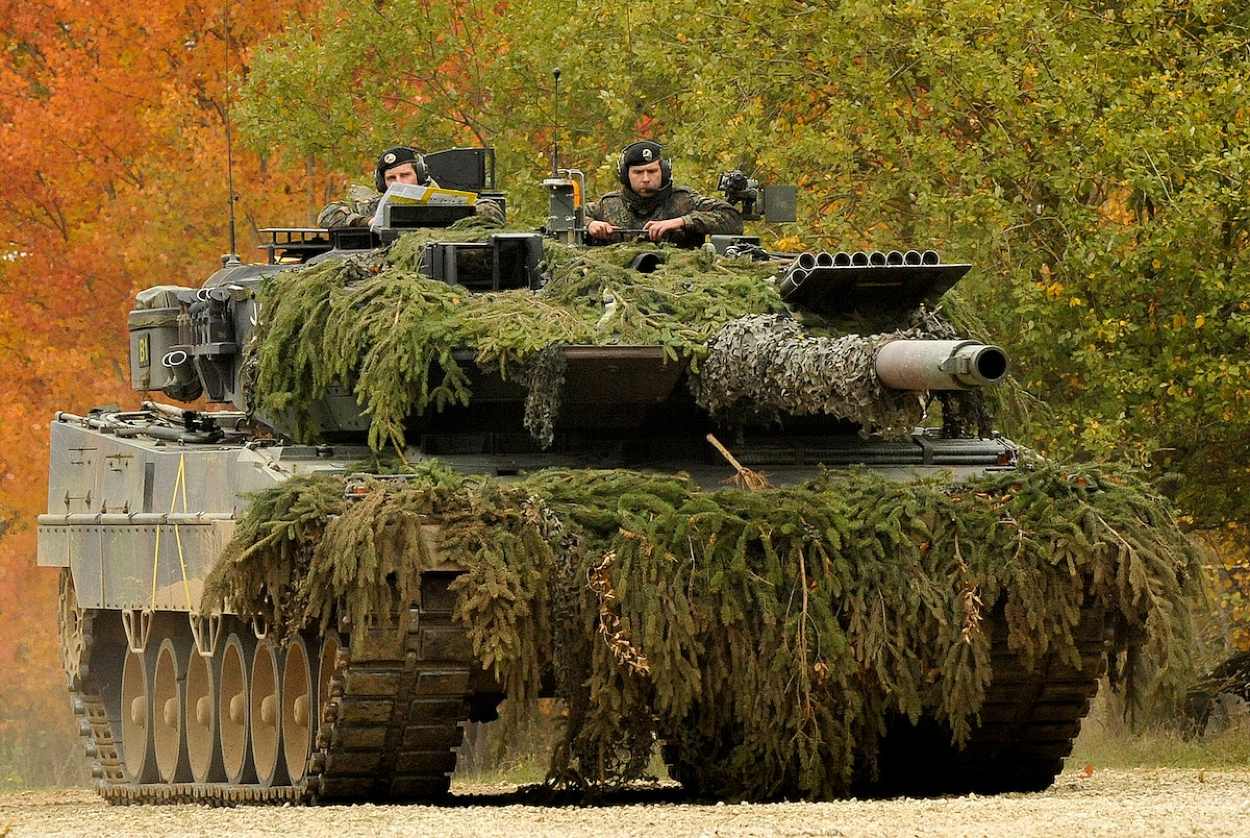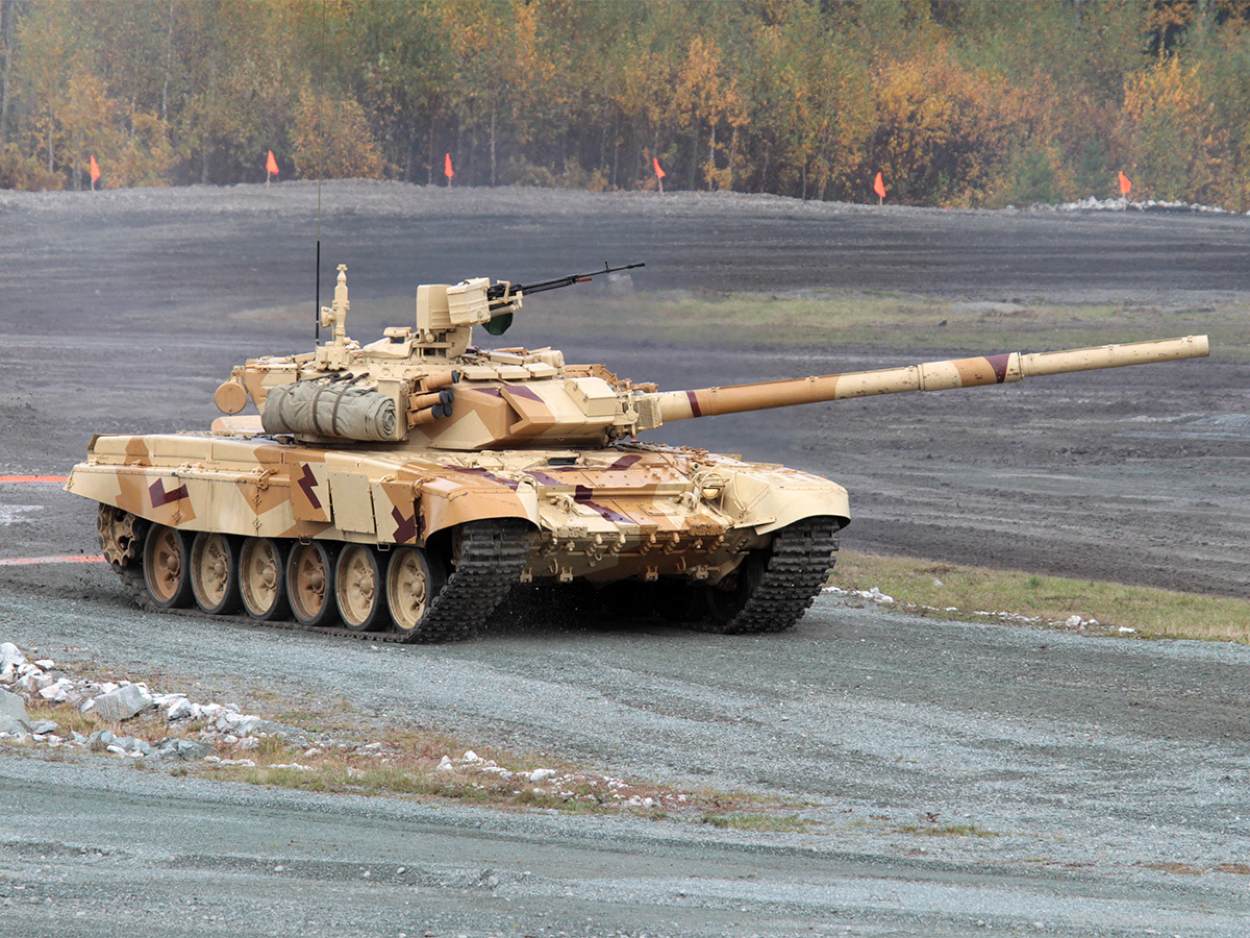The news is trickling from the first-of-its-kind duel between a Russian tanker and the Ukrainian crew operating the German “Legend on Chains” Leopard main battle tank in Donetsk.
The Russian battalion commander claimed that the Leopard MBT was forced to retreat after the first shots were fired in its direction.
The Russian tanker commander was quoted by the Russian news agency TASS. “The day before yesterday, Leopard came out to work out our positions, and we immediately advanced to the oncoming battle. Our armored duty group advanced to direct fire. Our crew was the first to give him (opened fire – approx. “Lenta ru”), but it did not hit; the terrain prevented it. He [Leopard] noticed this and began to leave, retreating [sic],” said the battalion commander.
The claims have not been verified independently.
After months of prevarication, Germany supplied the Ukrainian forces with 18 Leopard-2 tanks in March this year. Along with the state-of-the-art armored vehicles, Germany also delivered 40 Marder infantry fighting vehicles and two tank recovery vehicles.
Initially, Germany was reluctant to supply the tanks or even permit other European countries to send them independently. Under German law, the country has to approve Leopard 2s being re-exported by any country.
The Leopard tanks have multi-layered composite armor and, at 67 tons, are heavier than most of their Russian counterparts. Kyiv has a limited number of tanks from the Soviet or post-Soviet era and has been urging the coalition of countries to send something heavier to bulwark against the Russian onslaught.
The German-made Kampfpanzer (Main Battle Tank) Leopard 2 had been on the top of its wish list. Armed with a 120mm smoothbore gun and two 7.62mm machine guns, the 1970s-designed machine is the most popular tank among the NATO countries for its speed, fuel efficiency, and high accuracy shooting even over rough terrain. Presently, about 2000 Leopard 2 tanks are in use by European countries.

Apart from the Leopard 2 tanks, Ukraine has also received British-made Challenger 2 tanks and American Abrams ahead of its imminent summer counteroffensive.
So far, both sides in the Ukraine-Russia war had Soviet-era tanks, but the new phase will be the faceoff between the West and Russian technology. And the showdown is likely to dictate the development of tank technology in the years to come.
While the West is providing armored tanks to Ukraine, Russian Experts have dubbed the supplying of tanks to Ukraine a “suicide pact” in the face of anti-armor weapons and a lack of air support for protecting these machines. Russian experts have repeatedly expressed confidence that they have the wherewithal to destroy the German tanks.
Military expert Alexei Leonkov told Izvestia, “We know that our army only has a lot of anti-tank missile systems. There are, for example, air-based, which are used by helicopters or aircraft – ‘Storm,’ ‘Attack,’ and so on. There are ground complexes – ‘Competition,’ ‘Cornet,’ and others. These are the anti-tank systems that penetrate serious armor.”
Leonkov added that Russian tanks have armor-piercing feathered sabots, including “Mango-2” for the T-72 and “Lead” used on the T-90. According to him, “Mango-2” can pierce Leopard in any projection.
In February 2023, the German paper Bild enumerated three main threats to the Leopards. “Probably the biggest threat to the Leos are modern anti-tank guided missiles (ATGMs). These are primarily designed to destroy enemy main battle tanks and are usually deployed by small infantry squads from camouflaged positions, sometimes mounted on vehicles,” read the Bild article.
Another powerful weapon in the Russian arsenal is the anti-tank mines. In particular, the well-known TM-62 and its successors (between 7 and 8 kilograms of explosives) are widespread in the Russian arsenal. In the simplest models, the ignition is done by pressure when a heavy battle tank runs over the mine; in other variants, by vibration or a magneto detonator.
“The timely detection and clearing of such mine barriers will therefore be one of the most important tasks for the Ukrainian engineering teams,” explained the Bild journalists.
Another danger posed to the Leopard tanks is from the Russian battle tanks, though direct tank duels were not anticipated. But it did note that the relatively modern Russian battle tanks of T-72B3, T-90A/S/M, or T-80BVM can keep up with the Leos, and the latest rockets fired from the 2A46 cannon can penetrate the armor of the Leopard tanks.

“In a direct duel between the Leos and Russian tanks, it should therefore be less about the technical data and more about the skills of the respective tank crews and sufficient reconnaissance – that is, who discovers the enemy first and can score a hit,” Bild said.
Tanks have been a game-changing technology in warfare. Ukraine’s landscape has been conducive for tank battles, and in World War II, it saw major tank battles. With both sides – Russia and Ukraine – bringing in their modern battle tanks, the showdown is getting interesting. The main difference in the design of the Russian, German, and American tanks is in the turret. Russians are biased toward auto-loading guns.
This frees one man from the crew; three men can manage the tank. Western tank guns are loaded manually. This gives an advantage that the shells can be stored outside the tank turret, and it prevents detonation of the shells inside in case the crew compartment is hit. The shells stored inside the tank have proved devastating for Russian tanks in Ukraine.
Leopard 2 and similar Western tanks are agile, unlike the T-models of Russia, which cannot be reversed at speed. But the Western main battle tanks remain vulnerable to aerial attacks or anti-tank infantry in the forest and urban areas and hence require anti-aircraft and reconnaissance support.
With the same number of tanks on both sides, Ukraine can have an advantage as its troops have displayed creative and dynamic tactics instead of Russian troops’ poor tactical performance.
- Ritu Sharma has been a journalist for over a decade, writing on defense, foreign affairs, and nuclear technology.
- She can be reached at ritu.sharma (at) mail.com




